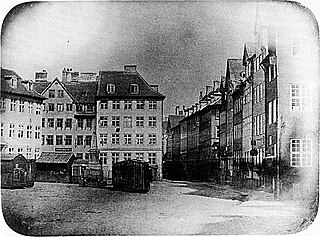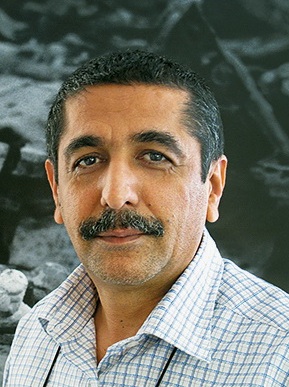Related Research Articles

Martin Parr is a British documentary photographer, photojournalist and photobook collector. He is known for his photographic projects that take an intimate, satirical and anthropological look at aspects of modern life, in particular documenting the social classes of England, and more broadly the wealth of the Western world.

Sebastião Ribeiro Salgado Júnior is a Brazilian social documentary photographer and photojournalist.

Henri Cartier-Bresson was a French artist and humanist photographer considered a master of candid photography, and an early user of 35mm film. He pioneered the genre of street photography, and viewed photography as capturing a decisive moment.

Josef Koudelka is a Czech-French photographer. He is a member of Magnum Photos and has won awards such as the Prix Nadar (1978), a Grand Prix National de la Photographie (1989), a Grand Prix Henri Cartier-Bresson (1991), and the Hasselblad Foundation International Award in Photography (1992). Exhibitions of his work have been held at the Museum of Modern Art and the International Center of Photography, New York; the Hayward Gallery, London; the Stedelijk Museum Amsterdam; and the Palais de Tokyo, Paris.

Stephen Shore is an American photographer known for his images of scenes and objects of the banal, and for his pioneering use of color in art photography. His books include Uncommon Places (1982) and American Surfaces (1999), photographs that he took on cross-country road trips in the 1970s.

Alec Soth is an American photographer, based in Minneapolis. Soth makes "large-scale American projects" featuring the midwestern United States. New York Times art critic Hilarie M. Sheets wrote that he has made a "photographic career out of finding chemistry with strangers" and photographs "loners and dreamers". His work tends to focus on the "off-beat, hauntingly banal images of modern America" according to The Guardian art critic Hannah Booth. He is a member of Magnum Photos.

Iñaki Bonillas is an artist living and working in Mexico City. His recent work is based on the photographic archive of his grandfather J.R. Plaza and family. In 2007 he participated in a group exhibition at Claremont Museum of Art.

Cristina García Rodero is a Spanish photographer and member of Magnum Photos and Agence Vu photo agencies.
Daniel Beltrá is a Spanish photographer and artist who makes work about human impact on the environment.

In Denmark, photography has developed from strong participation and interest in the very beginnings of the art in 1839 to the success of a considerable number of Danes in the world of photography today.

Jacob Aue Sobol is a Danish photographer. He has worked in East Greenland, Guatemala, Tokyo, Bangkok, Copenhagen, United States and Russia. In 2007 Sobol became a nominee at Magnum Photos and a full member in 2012. His work has been published in a number of monographs and many catalogues, and is held in the collection of the San Francisco Museum of Modern Art.
The Deutsche Börse Photography Foundation Prize is awarded annually by the Deutsche Börse Photography Foundation and the Photographers' Gallery to a photographer who has made the most significant contribution to the photographic medium in Europe during the past year.

Wiki Loves Monuments (WLM) is an annual international photographic competition held during the month of September, organised worldwide by Wikipedia community members with the help of local Wikimedia affiliates across the globe. Participants take pictures of local historical monuments and heritage sites in their region, and upload them to Wikimedia Commons. The aim of event is to highlight the heritage sites of the participating countries with the goal to encourage people to capture pictures of these monuments, and to put them under a free licence which can then be re-used not only in Wikipedia but everywhere by everyone.

José Ortiz-Echagüe was a Spanish entrepreneur, industrial and military engineer, pilot and photographer, founder of Construcciones Aeronáuticas SA (CASA) and Honorary lifetime President of SEAT. He was also nominated Gentilhombre de cámara con ejercicio during the reign of the King of Spain Alfonso XIII.

Tomas van Houtryve is a Belgian visual artist, director and cinematographer working mainly with photography and video. He is an Emeritus member of the VII Photo Agency, and a Contributing Artist for Harper's Magazine.
Vanessa Winship HonFRPS is a British photographer who works on long term projects of portrait, landscape, reportage and documentary photography. These personal projects have predominantly been in Eastern Europe but also the USA. Winship's books include Schwarzes Meer (2007), Sweet Nothings (2008) and She Dances on Jackson (2013).
Karen Knorr HonFRPS is a German-born American photographer who lives in London. In 2018 she received an Honorary Fellowship of the Royal Photographic Society.

Jassem Ghazbanpour is an Iranian photographer.
Paz Errázuriz is a Chilean photographer. Errázuriz documented marginalized communities such as sex workers, psychiatric patients, and circus performers during the military dictatorship of Chile. Errázuriz's has said about her work: "They are topics that society doesn't look at, and my intention is to encourage people to dare to look." She was a teacher at a primary school when Augusto Pinochet overtook Chile's Presidential Palace in 1973, inspiring her to begin her photography career. She is the co-founder of the Association of Independent Photographers (AFI). Originally titled the "Asociación de Fotógrafos Independientes," she helped create the AFI in 1981 to make it easier for artists in Chile to find legal support and organize group art shows.
Photography, as a branch of science, technology and art, developed in Ukraine in different ways, as historically lands were divided between two empires: Russia and Austria. This has led to some differences in the goals of photographic societies and in the technological and social role of photography in Ukraine.
References
- ↑ Opening Category Judging Criteria, Canon Photomarathon Hong Kong, accessed 2014-07-28
- ↑ Sleepless Night Photomarathon, Fotomission, accessed 2014-07-28
- 1 2 3 4 Fotomarathons around the world, Fotomarathon.de, accessed 2017-05-04
- ↑ Madrid photomarathon 1986 poster
- ↑ Photomarathons: Using New Technologies to Support Student Learning and Assessment Archived 2014-07-28 at the Wayback Machine , Dr Simon Jones, Leeds Metropolitan University, accessed 2014-07-28
- ↑ About us Archived 2014-08-12 at the Wayback Machine , FotoMarathon.dk, accessed 2014-07-28
- ↑ FhotoMarathon 2014, FotoMarathon.dk, accessed 2014-07-28
- ↑ "Photomarathon Sheffield". Photomarathon Sheffield. Retrieved 24 January 2023.
- ↑ Sierra, Rafael (13 April 1987). "1,200 participants in the photographic marathon". EL PAIS. Retrieved 13 July 2015.
- ↑ Caballero, Fernando (15 March 1985). "Photo 24 Hours" (PDF). Archived from the original (PDF) on 20 November 2015. Retrieved 13 July 2015.
- ↑ "Fotomarathon Berlin - 1998 - Zeitreise". fotomarathon.de. Retrieved 6 December 2015.
- ↑ As shown in the spanish wikipedia
- ↑ 4. European Month of Photography Berlin 2010, accessed 2015-12-07
- ↑ 1 topic. 3 cities. 9 photos., photomarahon.co.uk, published 2012-06-14, accessed 2014-07-28
- ↑ "1,700 participants in the fourth photographic marathon". EL PAIS. 18 April 1988. Retrieved 13 July 2015.
- ↑ "1,600 young people participate in the photographic marathon to be held in Madrid". EL PAIS. 4 May 1985. Retrieved 13 July 2015.
- ↑ Sierra, Rafael (June 4, 1986). "Hundreds of fans gathered in the square of Spain to photograph 'suicide'". EL PAIS. Retrieved July 13, 2015.
- ↑ School trip photomarathons: engaging primary school visitors using a topic focused photo competition, T. Collins et al., Association for Learning Technology, ISBN 978-91-977071-4-5, published 2011-08-31, accessed 2014-07-28
- ↑ "Yangon Fotomarathon" . Retrieved 4 May 2017.
- ↑ "Fotomarathon China" . Retrieved 4 May 2017.